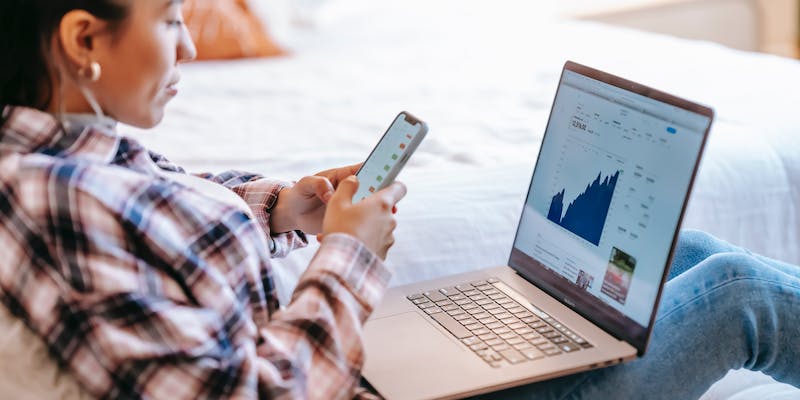There has been a dramatic change in how people invest their money in recent years. Most people have historically worked with a broker or financial advisor to oversee their investments. Nonetheless, more and more people are taking charge of their self-directed investment to secure their financial destiny. Those who choose to invest independently, without the help of a financial counselor or broker, are said to be engaging in Individualized or DIY Investing. The proliferation of internet trading platforms has contributed to this shift by giving investors easier access to data and analytical tools. Individualized or DIY Investing is advantageous since it gives investors more say over their money, which could lead to better returns and reduced fees. Yet, this calls for increased investment knowledge and a willingness to take on more risk on the part of individuals.
What is Individualized or DIY Investing?
Those who choose not to work with a financial counselor or broker are said to engage in Individualized or DIY Investing. When an investor engages in Individualized or DIY Investing, they are solely responsible for establishing investment strategies, selecting investments, and managing the portfolio over time. This method gives investors more freedom and reduces fees compared to conventional investment management.
The Benefits of Individualized or DIY Investing
Individualized or DIY Investing has many advantages, such as:
Lower Costs
Individualized or DIY Investing has the possibility of cheaper costs, which is a major advantage. Self-directed investors save money on advisor and broker costs by handling their investments. Investors can benefit from the cheap or even zero trading costs of many online trading platforms.
Greater Control
Investors have more freedom and flexibility with Individualized or DIY Investing. Instead of following the advice of a broker or financial advisor, investors can do their due diligence and make informed selections. By taking this route, investors are not restricted to a small pool of potential investments but are free to choose those they think would perform best.
Flexibility
When individuals invest their own money, they get more freedom to choose how they want to allocate their capital. Investors can now access broader investment options, including equities, fixed-income, mutual funds, and exchange-traded funds. This route allows investors to construct a portfolio that better reflects their individual needs and risk preferences.
Transparency
Investors can see more of what their money is doing through Individualized or DIY Investing. Their portfolio's status can be monitored in real-time, allowing them to make modifications as necessary. Investors can benefit from this level of openness by keeping tabs on their holdings and making well-informed decisions based on actual market conditions.
The Risks of Individualized or DIY Investing

Self-directed investment has the potential for high returns but also has hazards that investors should be aware of. Among the most significant dangers are the following:
Lack of Professional Guidance
Lack of expert advice is a major threat associated with DIY investing. Investors who don't work with a financial advisor or broker won't have access to the same quality of information or guidance. This can make it more difficult for investors to manage their portfolios and make educated investment decisions.
Increased Risk
Individualized or DIY Investing is often more precarious than managed portfolios. Investors who handle their portfolios must rely on their knowledge and judgment to make sound financial decisions. Inadequate information and skill on the part of investors can raise the potential for loss when employing this strategy.
Emotional Investing
Emotional investment is another risk associated with Individualized or DIY Investing. Those who handle their portfolios may be more susceptible to irrational choices motivated by greed or fear. In the long run, rash trading decisions can hurt portfolio performance.
Limited Access to Research and Analysis

Lastly, self-directed investors may be hampered by a lack of informational resources. Investors can find a lot of information online, but they might not be able to do as much homework as a financial counselor or broker.
Conclusion
Individuals now have more freedom and say over their financial destinies because of the growing popularity of Individualized or DIY Investing. While Individualized or DIY Investing has many advantages, including lower costs, greater control, flexibility, and transparency, it also carries some risks that investors should be aware of. These include the absence of professional guidance, increased risk, emotional investing, and a lack of access to research and analysis. Before embarking on Individualized or DIY Investing, investors should think long and hard about their investment aims, risk tolerance, and existing knowledge and experience. As a result, investors should be ready to do their homework and keep a close eye on their holdings. Individualized or DIY Investing can benefit those who are comfortable with taking on additional responsibility and are dedicated to learning as much as possible about the financial markets.




